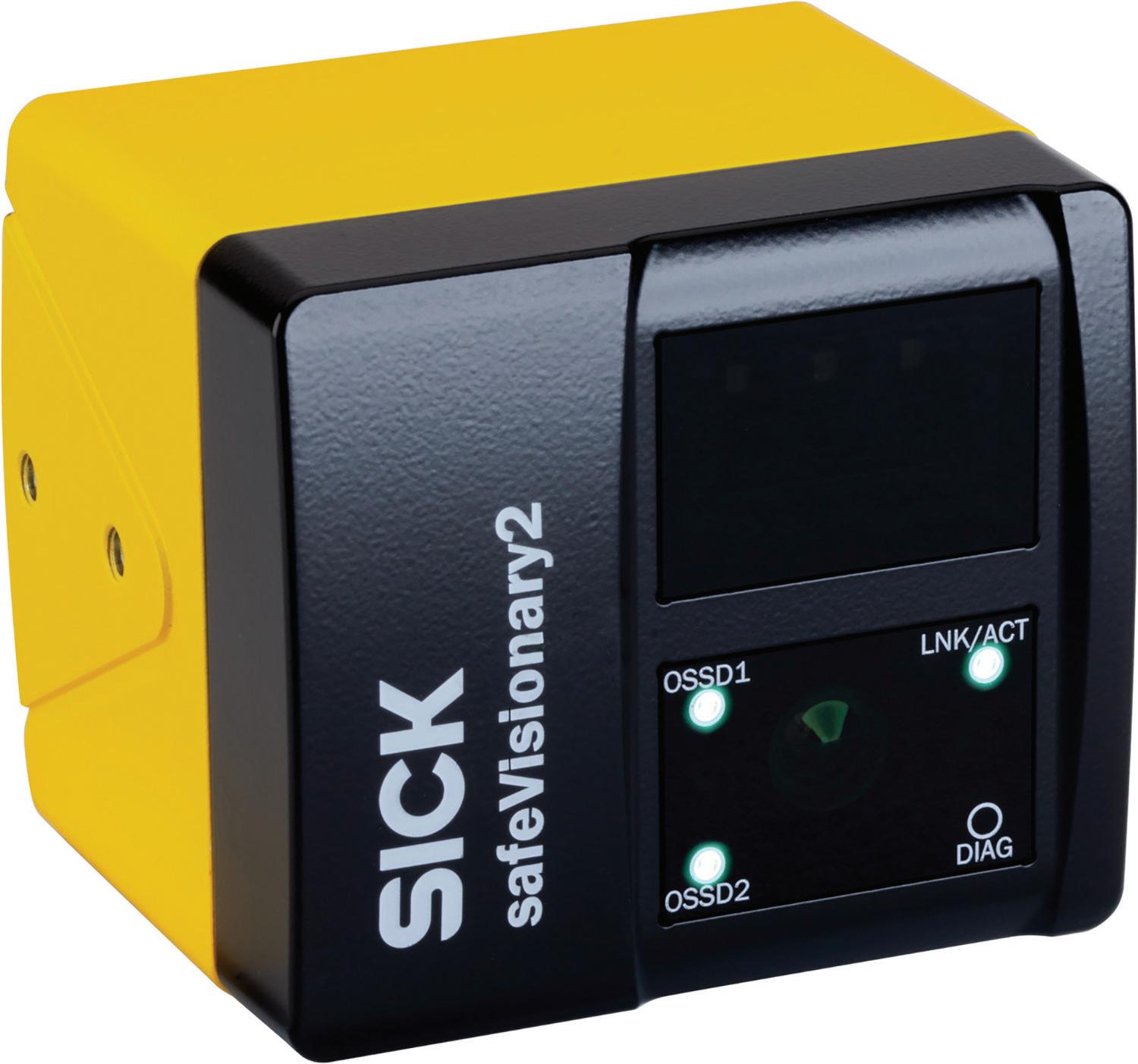
1 minute read
Design for Industry 3D time-of-flight sensor makes cobots safer
In the world of cobots, the spectrum of human-motion sequences poses a safety challenge. A robot’s power and power-limited mode is usually designed for the permissible force values of arms and hands. The robot must also avoid contact with sensitive body regions, such as the face, skull, and forehead, and therefore must stop near personnel.
safeVisionary2, a new 3D time-of-flight (ToF) camera with Performance Level c (PL c) from Sick, detects a person’s upper body and upper limbs so that safety distances can be reduced around the cobot. The sensor enables extended protection of the robot work area at human-head height such that a robot standstill is only necessary when a person’s head moves into the work area.
The compact 3D camera helps increase productivity and provides precise 3D measurement data to enhance automation. In addition to human safety, it can detect empty pallets for object localization and measurement, and it is especially e ective for AMRs for autonomous and intelligent navigation.
With safeVisionary2, obstacles above the scanning field level of a safety laser scanner are also reliably detected in the direction of travel, preventing collisions. In contrast to 2D anticollision solutions, safeVisionary2 can automatically restart in many cases.
Side protection safety is also increased during turning and pivoting maneuvers after loading and unloading. The 3D environmental information can also be used in mobile applications for precise localization and navigation via Gigabit Ethernet.
Mobile service robots used in unstructured environments require careful risk assessments. Obstacles such as stairs or ramps can pose potential crash risks for the robot. In addition to track protection, safeVisionary2 also enables cli detection and contour-based navigation. DW










